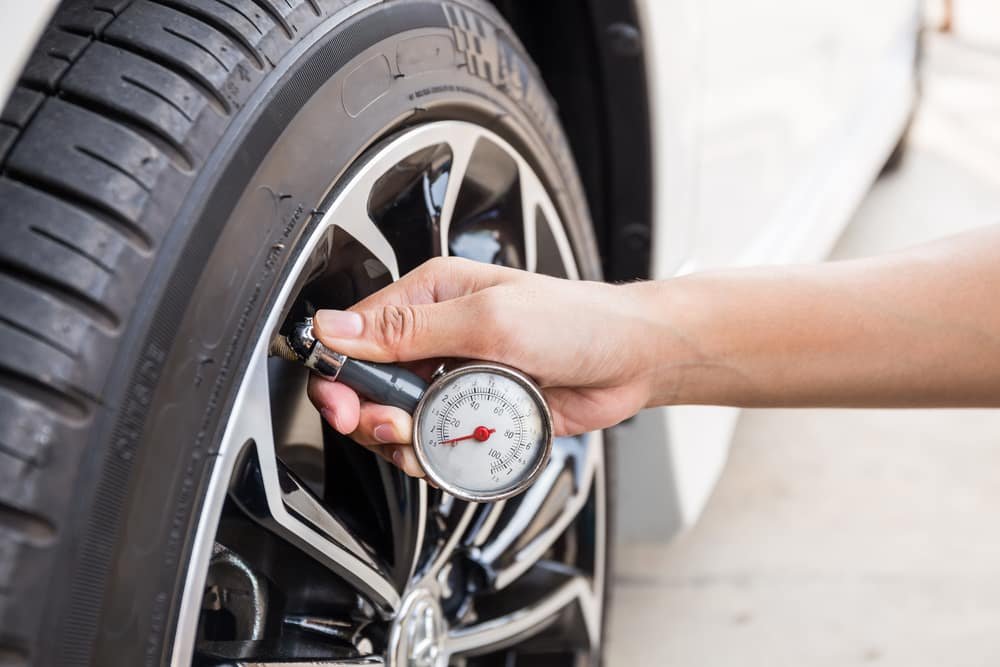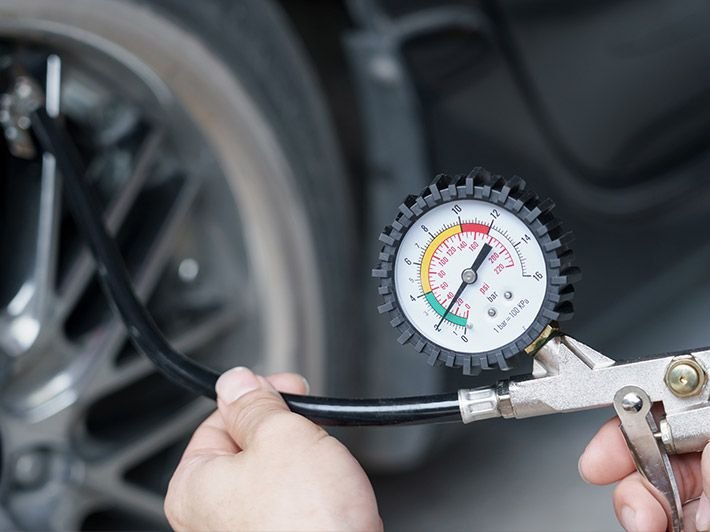You know, tire pressure is very important for your car. If your tires have the right pressure, your car drives better and uses less fuel. But if the pressure is too high or low, it can cause problems. In this article, we will show you how to measure tire pressure, why it is important for your safety, and how to keep it at the right level. You’ll also learn about tools like tire gauges and air compressors. Keep reading to make sure your tires are always in great shape!
What is Tire Pressure?
Tire pressure refers to the amount of air inside your tires, measured in PSI (pounds per square inch). Maintaining the correct tire pressure is essential for the optimal performance of your vehicle. When your tires are inflated to the manufacturer’s recommended PSI, they offer the best grip on the road, support your vehicle’s weight efficiently, and contribute to better fuel economy.
How to Measure Tire Pressure
To ensure your tires are in good shape, you need to check their pressure regularly. Here’s how you can do it:
- Get a Tire Pressure Gauge: Choose a reliable gauge—either digital or analog—that fits your needs.
- Remove the Valve Cap: This is the small cap on the tire’s valve stem.
- Press the Gauge onto the Valve Stem: Make sure it’s firmly pressed to get an accurate reading.
- Read the Measurement: Compare it to the recommended PSI for your vehicle, which you can find in the owner’s manual or on a sticker inside the driver’s door.
The Impact of Proper Tire Pressure
Effects on Vehicle Safety
Correct tire pressure is not just about comfort; it’s a critical safety measure. Properly inflated tires help your vehicle handle better, respond more accurately to steering inputs, and reduce the risk of blowouts.
Influence on Fuel Efficiency
When your tires are inflated to the proper PSI, your vehicle uses fuel more efficiently. Under-inflated tires create more rolling resistance, which means your engine has to work harder, thereby consuming more fuel.

Tire Wear and Longevity
Maintaining the right tire pressure extends the life of your tires. Over-inflated or under-inflated tires can cause uneven wear, which means you’ll have to replace them sooner. For instance, under-inflation causes the edges of the tire to wear faster, while over-inflation leads to faster wear in the center.
Common Tire Pressure Issues
Symptoms of Low Tire Pressure
You might notice some signs indicating low tire pressure, such as:
- Warning light on your dashboard
- Soft or squishy tires
- Reduced handling and stability
If you experience these symptoms, check your tire pressure as soon as possible to avoid potential problems.
Consequences of Over-Inflation
While low tire pressure is a concern, over-inflation can also be problematic. Tires that are too inflated can become rigid and less effective at absorbing shocks from the road, leading to a harsher ride and increased risk of tire damage.
Maintaining Correct Tire Pressure
Recommended Tire Pressure for Different Vehicles
Every vehicle has a recommended tire pressure, which can vary based on the type and size of the tires. You can find this information in your vehicle’s manual or on a sticker located on the driver’s side door frame. For most passenger cars, the recommended PSI ranges from 30 to 35 PSI.
Regular Checks and Adjustments
It’s a good practice to check your tire pressure at least once a month and before long trips. Changes in temperature can affect tire pressure, so adjust accordingly. In colder weather, tire pressure tends to drop, while in warmer weather, it increases.
Using Tire Pressure Monitoring Systems (TPMS)

Modern vehicles are equipped with a Tire Pressure Monitoring System (TPMS) that alerts you when your tire pressure is low. This system can help you stay informed about your tire condition without manual checks.
Tools and Techniques for Tire Pressure Management
Choosing the Right Tire Pressure Gauge
Select a gauge that is easy to read and reliable. Digital gauges often provide precise readings and are user-friendly, while analog gauges are durable and straightforward.
Using Air Compressors for Inflation
If your tires are under-inflated, you’ll need to use an air compressor. Follow these steps:
- Attach the Hose: Connect the air hose to the tire valve.
- Inflate to the Correct PSI: Check the tire pressure frequently to avoid over-inflation.
- Remove the Hose: Once the correct pressure is reached, detach the hose and replace the valve cap.
Calibration and Accuracy of Gauges
Ensure your gauge is calibrated for accurate readings. Regular calibration helps maintain precision, ensuring your tires are inflated to the correct pressure.

Troubleshooting Tire Pressure Problems
Diagnosing Pressure Loss
If you frequently experience pressure loss, it may be due to a leak or valve issue. Check for punctures or other damage and consult a professional if needed.
When to Seek Professional Help
If you’re unsure about your tire pressure or if you notice persistent issues, it’s best to visit a mechanic. They can inspect your tires for damage and ensure they are in optimal condition.
Additional Resources
Vehicle Maintenance Manuals
Refer to your vehicle’s maintenance manual for specific tire pressure recommendations and additional care tips. You can also find useful information online through automotive forums and manufacturer websites.
Recommended Reading and Guides
For further reading, consider exploring books and articles on vehicle maintenance. Online tools and calculators can also help you manage your tire pressure effectively.
In summary, maintaining the right tire pressure is crucial for safety, fuel efficiency, and tire longevity. Regular checks and adjustments will ensure your vehicle performs at its best. If you found this article helpful, please leave a comment, share it with friends, or explore more of our content for further insights.
FAQs about Tire Pressure
What is the ideal tire pressure for my car?
The ideal tire pressure for your vehicle is specified by the manufacturer and can usually be found in the owner’s manual or on a sticker inside the driver’s door frame. Maintaining the correct pressure ensures optimal vehicle performance, safety, and fuel efficiency. It’s important to check this regularly and adjust as needed, especially with changes in temperature.
How often should I check my tire pressure?
You should check your tire pressure at least once a month and before long trips. Temperature changes can cause fluctuations in tire pressure, so it’s best to monitor it regularly to avoid potential issues. Consistent checks help maintain tire longevity and overall vehicle safety.

What happens if my tire pressure is too low?
If your tire pressure is too low, it can lead to poor handling, increased tire wear, and reduced fuel efficiency. Under-inflated tires also pose a safety risk, as they are more likely to overheat and potentially cause a blowout. Regularly monitoring and maintaining the correct pressure helps avoid these problems.
Can I use a regular air pump to inflate my tires?
Yes, you can use a regular air pump to inflate your tires, but make sure it is equipped with a pressure gauge to avoid over-inflation. Many gas stations provide air pumps with built-in gauges, or you can use a portable air compressor at home. Always follow the manufacturer’s recommended tire pressure to ensure proper inflation.
What should I do if my tire pressure warning light comes on?
If your tire pressure warning light comes on, it indicates that one or more of your tires may be under-inflated. Check the tire pressure as soon as possible and inflate the tires to the recommended PSI. If the light remains on after adjusting the pressure, there may be a problem with the tire or the TPMS (Tire Pressure Monitoring System), and you should consult a professional.